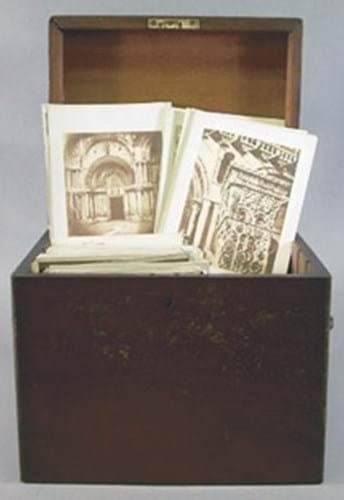
The catalogue description in Cumbrian auctioneers Penrith, Farmers' and Kidd's March 22 sale of the lot pictured here didn't sound terribly promising to the uninitiated and the £80-120 estimate gave no clues to any potential value. But as ever in the antiques world, the better informed could sense a whiff of potential in that most rudimentary description.
When Ken and Jenny Jacobson, keen-eyed specialists in early photography read it they contacted the auction house and, despite the poor condition being reiterated, the ensuing conversation convinced them this was something worth travelling north to view.
Come sale day they weren't the only interested party. Although the bidding started at just £60, Mr Jacobson, who was in the room, had some equally determined competition from a telephone bidder and the two of them embarked on a bidding duel.
"I heard a gasp from the room at £2000," said Ken Jacobson. In fact he had to go on to no less than £75,000 (plus 15 per cent buyer's premium) to secure the prize.
So why all the interest? Those metal images were in fact daguerreotypes, one of the earliest photographic processes, and dated from the 1840s and '50s. The stonework and buildings were European architectural views including some views of Venice.
Many daguerreotypes are not hugely valuable but the earliest examples can be, especially if they are identifiable architectural studies by known pioneering photographers.
In May 2003, for example, Christie's obtained a record £500,000 for a whole plate daguerreotype of the Temple of Zeus on the Acropolis taken in 1842 by Joseph-Philibert Giraud de Prangey, as part of a cache of 86 Mediterranean and Middle Eastern views by the pioneering French photographer which totalled £3.25m.
Daguerreotypes are fragile - the image can be easily damaged simply by handling - so they are usually covered in glass and come in cases but these Cumbrian examples were unprotected or had just thin paper bindings which made it rather more difficult for the non-specialist to recognise what they were. Mr Jacobson said the 14 images of buildings on card are salt prints and are probably copies of the daguerreotypes.
The collection had been consigned to Penrith, Farmers' and Kidd by a local vendor in his eighties who is delighted at the result.
So are the Jacobsons, who are now in the process of researching their purchase, which they describe as "a very exciting discovery".




